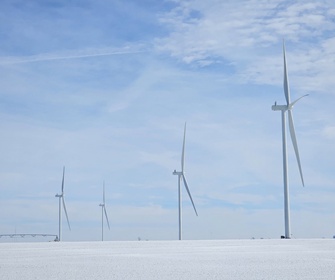Researchers at the U.S. Department of Energy’s (DOE’s) National Renewable Energy Laboratory (NREL) have determined how to transport massive wind turbine blades to parts of the country at a lower cost than segmented blades, but the solution will require some flexibility on the part of industry.
Manufacturing blades that can bend with “controlled flexing” will allow railroads to ship longer blades around the United States. Because of bends, twists, and turns in railroad lines, the upper limit for transporting single-piece land-based blades by rail is currently 75 meters. The conceptual design envisioned by researchers would stretch that limit to 100 meters or beyond for land-based turbines. Blades of this length are already being proposed for offshore wind turbines and can be transported via barge, but they have not been installed inland due to the transportation constraints.
For land-based turbines, the longer blades could be shipped attached across the length of four railcars. The Big Adaptive Rotor Project (BAR) emerged from a 2018 workshop on supersized land-based wind turbine blades. In addition to NREL, other BAR partners are Sandia National Laboratories, Oak Ridge National Laboratory, and Lawrence Berkeley National Laboratory. Engineers at DNV in 2019 proposed on a conceptual level the controlled flexing of the blades during rail transport.








